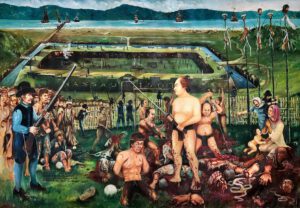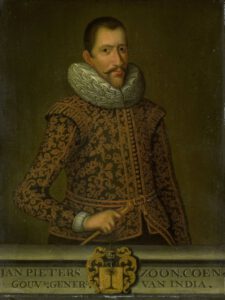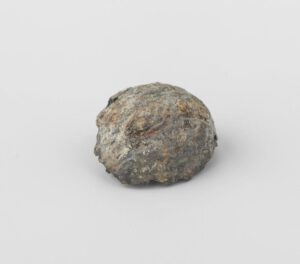[vc_row][vc_column][vc_column_text]
The Spice Islands – Treasure Chest of Holland
[/vc_column_text][/vc_column][/vc_row][vc_row][vc_column][vc_column_text]From Wikipedia, the free encyclopedia——-
The Spice Islands comprise of The Maluku Islands or the Moluccas (Molukken), alarge archipelago in eastern Indonesia. Tectonically they are located on the Halmahera Plate within the Molucca Sea Collision Zone. Geographically they are located east of Sulawesi, west of New Guinea, and north and east of Timor. Lying within Wallacea (mostly east of the biogeographical Weber Line), the Maluku islands have been considered part of both Asia and Oceania.
The islands were known as the Spice Islands because of the nutmeg, mace and cloves that were exclusively found there, the presence of which sparked colonial interest from Europe in the sixteenth century.
The Maluku Islands formed a single province from Indonesian independence until 1999, when it was split into two provinces. A new province, North Maluku, incorporates the area between Morotai and Sula, with the arc of islands from Buru and Seram to Wetar remaining within the existing Maluku Province. North Maluku is predominantly Muslim, and its capital is Sofifi on Halmahera island. Maluku province has a larger Christian population, and its capital is Ambon. Though originally Melanesian, many island populations, especially in the Banda Islands, were massacred in the seventeenth century during the Dutch–Portuguese War, also known as The Spice War. A second influx of immigrants primarily from Java began in the early twentieth century under the Dutch and continues in the Indonesian era, which has also caused a lot of controversy as the Transmigrant programs have done so and even thought to have led to the Maluku Riots.
Between 1999 and 2002, conflict between Muslims and Christians killed thousands and displaced half a million people.
Read a Travel Article from Indonesia Expat here: https://indonesiaexpat.id/travel/sailing-the-spice-islands/
[/vc_column_text][/vc_column][/vc_row][vc_row][vc_column][vc_separator border_width=”3″][/vc_column][/vc_row][vc_row][vc_column]
[/vc_column][/vc_row][vc_row][vc_column][vc_separator border_width=”3″][/vc_column][/vc_row][vc_row][vc_column][vc_column_text]How the VOC gained the monopoly on spices in Banda

Translated from ‘Het Parool‘. Written by
On March 15, 1599, the inhabitants of Banda saw a Dutch ship for the first time, Captain Jacob van Heemskerck’s Gelria. It was Jan Pietersz. Coen who conquered the Banda Islands in 1621 after a bloody massacre to give the Dutch East India Company a monopoly on nutmeg and mace.
The museum in the main street of Banda Neira leaves nothing to be desired in terms of clarity. Anyone who enters there is immediately confronted with a large painting of the massacre by Jan Pietersz. Coen had it done in 1621. The blood almost literally splashes off the canvas.
It is the representation, through Bandanese eyes, of years of struggle between the Dutch East India Company (VOC) and the Bandanese for dominance over six islands that easily fit into the IJsselmeer: Banda Neira, Banda Besar, Banda Api, Ay, Run and Rosengein, which is now called Hatta and is the only island that was and is not suitable for nutmeg cultivation. The six islands lie in the endless pool of water called the Banda Sea, far away from all the other islands that make up the Republic of Indonesia today.
The only islands with nutmeg
From the outset it was clear that spices were the most important commodity for the VOC, for which Amsterdam functioned as the largest transhipment port. Cloves, mace and nutmeg, precisely because of their scarcity, formed the top of the pyramid, which consisted of cinnamon and pepper. Exactly four hundred years ago, the Dutch trading company succeeded in conquering the monopoly of two of those products: the nutmeg and the nutmeg skin, the mace.

Jan Pietersz played a leading role in the battle for monopoly. Coen, who set out in 1621 to bring the only islands where this precious spice was found permanently under the authority of the VOC. That battle, long and bloody, actually started on March 15, 1599. On that day the inhabitants of Banda saw for the first time a Dutch ship, the Gelria of Captain Jacob van Heemskerck.
From the outset, however, things went wrong between the Dutch and the Bandanese. There was a fight about everything. Contracts were made and broken, prices raised and lowered. More and more the Bandanese felt trapped by the Dutch, especially when their own fleet was reduced to ashes. However, Van Heemskerck and the skippers who moored on the Banda Islands after him did not only have problems with the Bandanese. They also had to reckon with European rivals, who were after the nutmeg, which was quickly worth ten times the value in Europe. At first the Portuguese were the main privateers on the coast; after 1605 they became the English.
Decimated population
When Jan Pietersz. Coen became governor-general in October 1617, his mission was clear. He would not accept the return trip to the homeland without the conquest of the Banda Islands. Militarily subjugating the Bandanese was necessary, he thought, and to that end he assembled a large fleet. In the wake of the admiral ship Nieuw-Hollandia he collected sixteen other ships, 36 canoes, 1,655 crew members, an unknown number of “sturdy” soldiers and 286 captured Javanese. With that armada he sailed to the Banda Islands in April 1621.
The Bandanese resistance was persistent. It took until well into July before the last hotspots of resistance were finally rolled up: then most of the Bandanese had been killed or taken to Java as slaves. Coen was then already long and broad in Batavia. In May, he had the chiefs executed and celebrated his victory during a “gun battle” in Fort Nassau. He left immediately afterwards. Coen considered the conquest of Besar to be the crowning glory of his work. He estimated that 2500 inhabitants of Besar had been killed by starvation or by the sword as a result of the battle. Hundreds of residents were deported to Batavia and would never see their island again. An observer, sadly unknown, estimated the population of the Banda Islands at 15,000 before the arrival of Coen. After his departure there were less than a thousand left.
Production, sales and distribution of Nutmeg
The inhabitants of Run, the last island where resistance was still offered, also surrendered. Only the nine cannons of the English on the small island of Nailaka, just off the coast of Run, remained standing and ensured that the Netherlands only got a free hand here on July 31, 1667.
At that time the Treaty of Breda was signed, which ended the Second Anglo-Dutch War and which stipulated, among other things, that a rock in North America was to be handed over to the British. In exchange, the Dutch were allowed to stay in Suriname and Run was transferred to the Republic of the United Netherlands. The clump of rock in North America is better known today as New York; Nowadays you can stay in homestay Manhattan on the island of Run.

With Coen’s action in 1621, the VOC had achieved its most important goal: to gain control of the monopoly on nutmeg and mace, two of the five most important spices. The sale and distribution was thus completely in the hands of the Company. And because production took place exclusively on the Banda Islands, that too had become a pure VOC affair. An unheard of result in those days.
[/vc_column_text][/vc_column][/vc_row][vc_row][vc_column][vc_separator border_width=”3″][/vc_column][/vc_row][vc_row][vc_column][vc_column_text]
The Spice Islands
(Please also visit www.eastindies.art – East Indies Art has a creatively diverse collection of reproduced antique maps, prints, vintage posters and photographs, here you will find a breadth of artwork to turn any interior into an artful sanctuary. And for 1000’s more global antique maps and print products visit www.maps-prints.com)
[/vc_column_text][/vc_column][/vc_row][vc_row][vc_column][vc_separator border_width=”3″][/vc_column][/vc_row]
